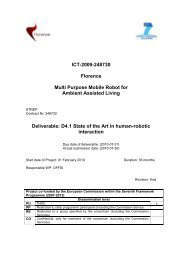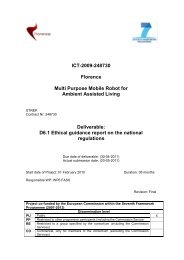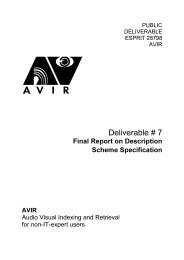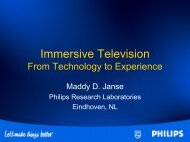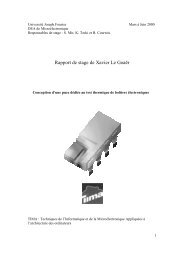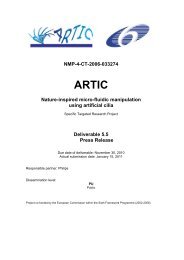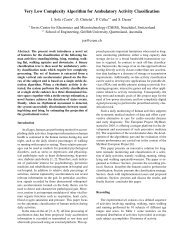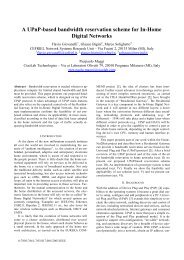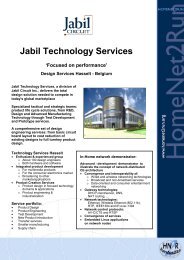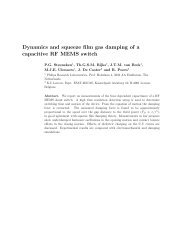User Interface Service Software Developerís Guide - Hitech Projects
User Interface Service Software Developerís Guide - Hitech Projects
User Interface Service Software Developerís Guide - Hitech Projects
You also want an ePaper? Increase the reach of your titles
YUMPU automatically turns print PDFs into web optimized ePapers that Google loves.
January 2008<br />
Public<br />
1.4.1.3 Run Trainer Demo Application<br />
Trainer application is implemented to demonstrate the use of SpeakerRecognition service for<br />
enrolling a new speaker’s voiceprint: in order the SpeakerRecognition service to be able to<br />
identify or verify a speaker’s identity a model of that speaker should be created and stored in<br />
the C:\Amigo\Codebooks folder. The model (voiceprint) is produced by processing an<br />
number of speech samples of the particular user. In this demo we use 10 sentences/files for<br />
creating the voiceprint plus 4 additional sentences/files for calculating the thresholds for the<br />
particular user.<br />
Launch the application by executing the Trainer.exe located in<br />
C:\Amigo\sr\SpeakerRecognition\Trainer\bin\Release\.<br />
The application is asking user to specify the path for the directory that the training speech<br />
input will be stored. The default directory is: C:\Amigo\sr\Training and is defined in the<br />
configuration file SpkSettings.cfg<br />
Then the application asks for new speaker name (userID). If the specified userID exists in the<br />
enrolled speakers’ database the application confirms that the user wish to re-train the<br />
particular speaker.<br />
In the opposite situation a structure is created for the new speaker including the folders<br />
userID\Thresh and userId\Train under the Training\Recordings directory.<br />
Amigo IST-2004-004182 36/114



